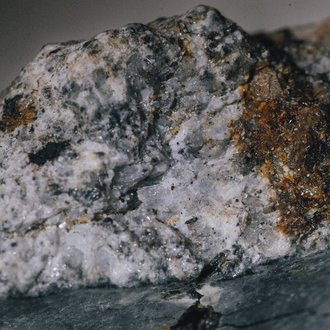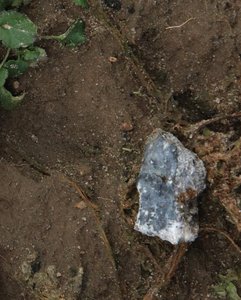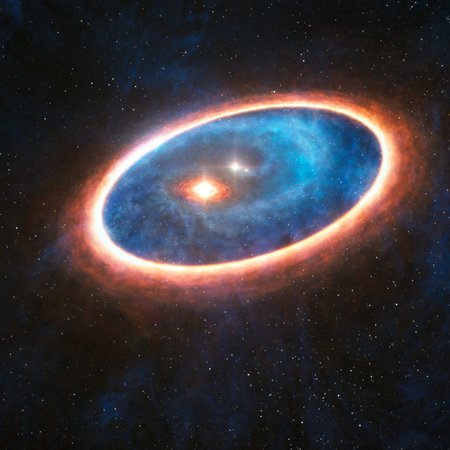Virtual Babelsberg Starry Night on 20 June 2024 on the meteorite discovery near Ribbeck

A fragment of the Ribbeck meteorite that hit near Nauen on 21 January 2024. Its atypical light grey colour is caused by the rare material aubrite.
Credit: Jürgen RendtelOn 21 January 2024, an asteroid struck Ribbeck near Nauen in Brandenburg. Dr Jürgen Rendtel from the Leibniz Institute for Astrophysics Potsdam (AIP) was one of the meteorite searchers and found some fragments himself. In his lecture, which will be broadcast from Thursday, 20 June 2024 on the YouTube channel “Urknall, Weltall und das Leben” (Big Bang, Universe and Life), he reports on the discovery, the search for the fragments and the peculiarities of the meteorite (in German).
Asteroids, small pieces of rock in the solar system, do not usually come very close to us. But on 20 January 2024, a specimen about one metre in size was discovered, which hit the Earth's surface just three hours later. Upon entering the atmosphere, the object lit up as a fireball about as bright as the moon that could be seen from afar in the clear night sky. At the end of its blazing path at an altitude of around 20 kilometres, the fragments fell to the ground as meteorites. Observations of the fireball by video cameras made it possible to calculate the exact location of the fall, which was west of Nauen in Ribbeck.
Search operations were immediately organised to secure the fresh material quickly for investigation. Starting 23 January, a total of more than 200 documented finds were collected and examined. It turned out that the meteorites consist of the extremely rare material aubrite. The meteorite type aubrite is named after the place where the first such piece was found in Aubres, France, in 1836. The small body probably originates from a hot area of our solar system, and has experienced many collisions with other rocks in its history. The material is therefore very fragile; many pieces shattered on impact. The fusion crust is glassy and full of bubbles, and must have solidified very quickly. Individual meteorite samples are still being investigated in laboratories using isotope analysis. This is only the fourth time that pieces of an object previously observed as an asteroid have been found on the ground.
‘It is a great stroke of luck that the asteroid hit right in the middle of Europe, on our doorstep so to speak, and that its orbit could be calculated precisely,’ says Dr Jürgen Rendtel, member of the Solar Physics section, expert on meteorites and successful finder of several meteorite pieces. In his lecture entitled ‘From 2024BX1 to Ribbeck’ (in German), he talks about the discovery of the asteroid and the arduous search for the fragments in the fields near Ribbeck. He also discusses the special properties of the material. A summary of the meteorite search and results to date will be published on 26 June 2024 in an article by Jürgen Rendtel and co-authors in the journal WGN, The Journal of the International Meteor Organisation.
Usually on the 3rd Thursday of each month, starting at 8 p.m., the lectures of the Babelsberg Starry Nights become available at
https://www.aip.de/babelsberger-sternennaechte
and via the YouTube channels 'Urknall, Weltall und das Leben' (Big Bang, Universe and Life) and 'videowissen' and can be viewed afterwards at any time.
Further information
Babelsberg Starry Nights: https://www.aip.de/babelsberger-sternennaechte
Entry in the Meteorite Database: https://www.lpi.usra.edu/meteor/?code=81447
Images
A fragment of the Ribbeck meteorite that hit near Nauen on 21 January 2024. Its atypical light grey colour is caused by the rare material aubrite.
Big screen size [1000 x 684, 160 KB]
Original size [3918 x 2682, 2.0 MB]
The meteorite fragment where it was found on a field in Ribbeck
Big screen size [1000 x 1243, 270 KB]
Original size [1665 x 2071, 710 KB]



